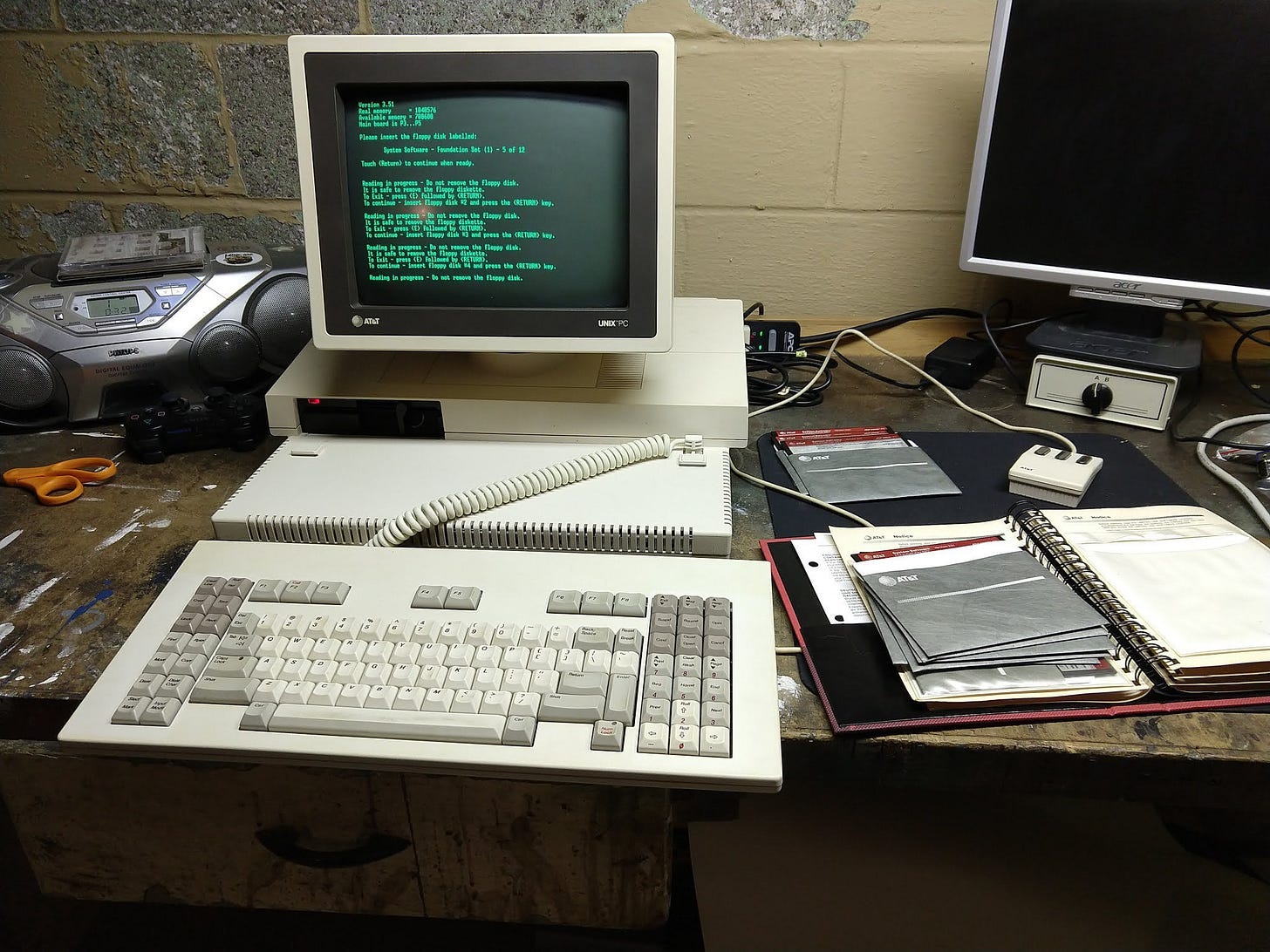The AT&T and BSD Conflict: UNIX Wars
The conflict between AT&T and BSD in the 1980s and early 1990s is a pivotal moment in the history of operating systems. This period shaped the development of open-source software and the legal frameworks around intellectual property in software. Here’s an extensive account of the situation.
1. The Origins of UNIX and BSD
UNIX Development: UNIX was created in 1969 by Ken Thompson, Dennis Ritchie, and others at AT&T’s Bell Labs. It was a revolutionary operating system with a modular design, portability, and multitasking capabilities. Initially developed for internal use, AT&T, bound by government regulations at the time, could not enter the computer market. Instead, it licensed UNIX at low cost to academic institutions and research labs.
BSD Emerges: In the 1970s, the University of California, Berkeley, became one of UNIX’s most prominent adopters. Students and researchers at Berkeley modified UNIX extensively, adding features like the C Shell (csh), virtual memory, and TCP/IP networking. Their version, Berkeley Software Distribution (BSD), became highly influential and widely used in academia and research.
2. The Commercialization of UNIX
In the early 1980s, AT&T’s regulatory landscape changed, allowing the company to enter the commercial software market. It formed UNIX System Laboratories (USL) to market and develop UNIX as a commercial product. With UNIX now seen as a lucrative asset, AT&T became increasingly protective of its intellectual property.
BSD, however, continued to evolve. The University of California distributed BSD under permissive licenses, encouraging its adoption and modification. While this was an academic initiative, it started competing indirectly with AT&T's commercial UNIX products.
3. The Build-Up to the Lawsuit
BSD’s Popularity and Impact: By the late 1980s, BSD was widely used, particularly in networking and academia. Companies like Sun Microsystems and others incorporated BSD components into their systems. However, BSD contained UNIX source code licensed from AT&T, raising legal questions about ownership and derivative works.
AT&T’s Concerns: USL, as a subsidiary of AT&T, viewed BSD as a threat to its market position. They argued that BSD included proprietary UNIX code and that derivative works distributed by BSD violated their licensing agreements. AT&T was particularly concerned about BSD’s permissive licensing, which allowed competitors to use BSD components without paying AT&T.
4. USL v. BSDi Lawsuit
The Defendants: In 1992, AT&T’s USL filed a lawsuit against Berkeley Software Design, Inc. (BSDi) and the University of California. BSDi was a company founded to commercialize BSD-based software, while UC Berkeley had distributed BSD versions.
AT&T’s Claims: The lawsuit alleged that BSDi and UC Berkeley had:
Distributed software containing proprietary UNIX code owned by AT&T.
Violated copyright laws by using AT&T code without authorization.
Caused potential harm to the commercial viability of UNIX.
BSDi’s Defense: BSDi and UC Berkeley argued that:
Much of the BSD code was original and did not rely on AT&T’s proprietary code.
They had worked to replace AT&T’s code with independently written alternatives in subsequent BSD releases.
The lawsuit was an attempt by AT&T to stifle competition.
5. Code Review and Legal Battles
The lawsuit triggered an exhaustive code review process. Independent experts analyzed the BSD source code to determine how much of it was derived from AT&T’s UNIX. UC Berkeley and BSDi worked to rewrite or remove any disputed code.
The case dragged on for two years, during which the software community closely followed developments. The lawsuit was seen as a test case for software copyright and the balance between proprietary and open-source models.
6. Settlement and Resolution
In 1994, the lawsuit was settled out of court. The settlement terms included:
UC Berkeley agreed to remove any remaining AT&T code from BSD. This resulted in the release of 4.4BSD-Lite, a version explicitly free of proprietary UNIX code.
BSDi continued to distribute its software, and the lawsuit did not explicitly favor AT&T’s claims.
While the settlement ended the legal dispute, it highlighted the complexities of software copyright law and the challenges of distinguishing original work from derivative works.
7. Impact on the Industry
The Rise of Open Source: The lawsuit solidified BSD’s position as a foundational technology for open-source software. FreeBSD, OpenBSD, and NetBSD emerged as direct descendants of 4.4BSD-Lite, each focusing on different aspects of performance, security, and portability.
UNIX Fragmentation: AT&T’s aggressive stance in the lawsuit contributed to the fragmentation of the UNIX ecosystem. Proprietary UNIX vendors like Sun Microsystems, HP, and IBM developed their versions, leading to compatibility issues and weakened UNIX’s dominance.
Linux’s Growth: The legal uncertainty around BSD during the lawsuit years gave Linux a competitive edge. Linus Torvalds’ Linux kernel, combined with the GNU tools, became a widely adopted alternative, unburdened by the legacy of UNIX licensing disputes.
8. Lessons Learned
The AT&T and BSD saga is a case study in intellectual property law, software licensing, and the balance between proprietary and open-source models. It highlighted:
The importance of clear licensing terms in software development.
The risks of commercializing software initially developed in an open academic environment.
The potential for legal disputes to shape the direction of technology development.
Today, BSD and UNIX influence countless modern systems, from macOS to server platforms, while Linux dominates in the open-source world. The legacy of this conflict continues to resonate in the ongoing debates about software freedom and innovation.


